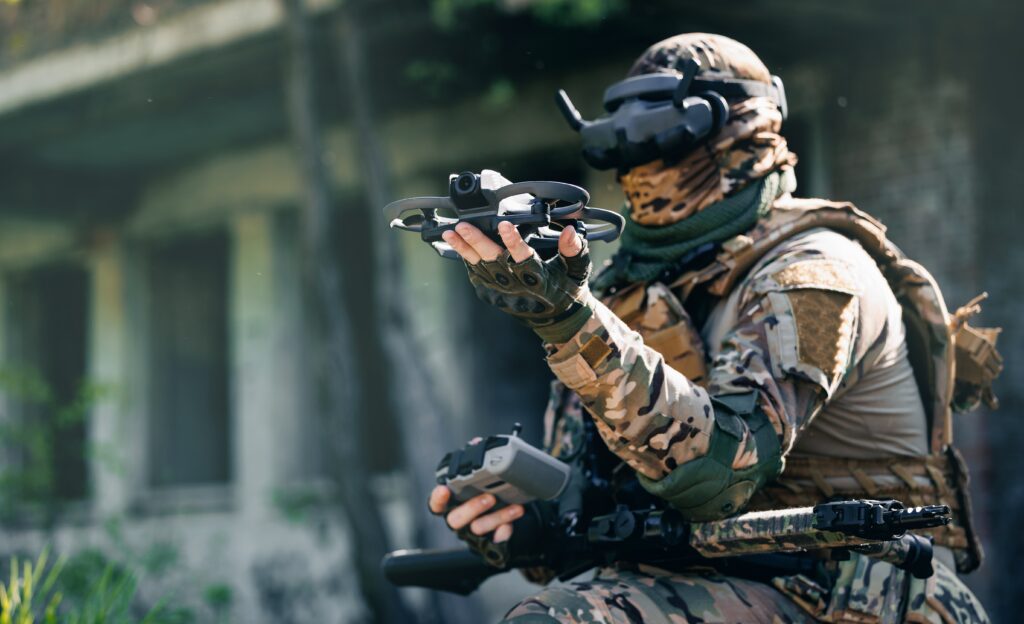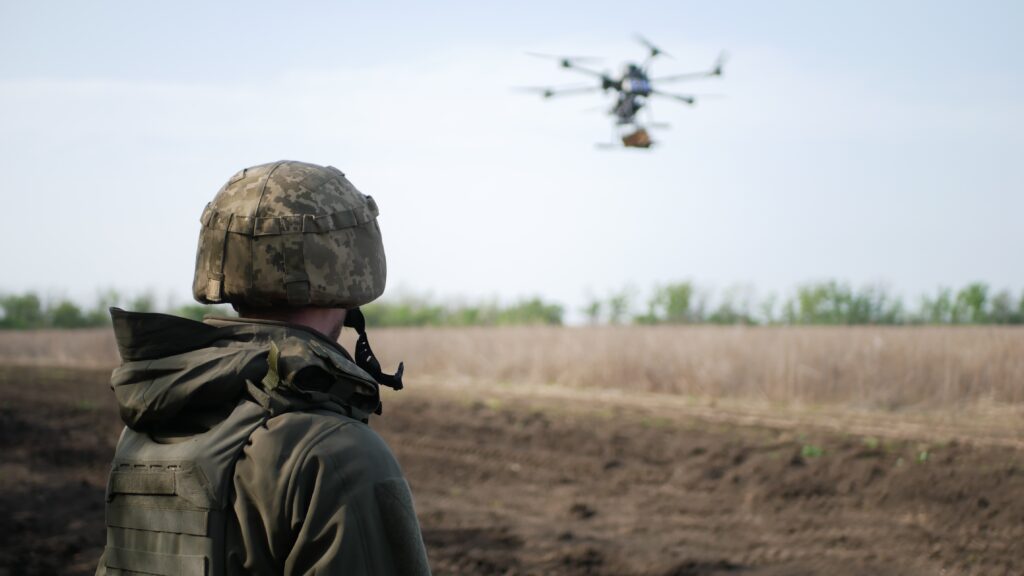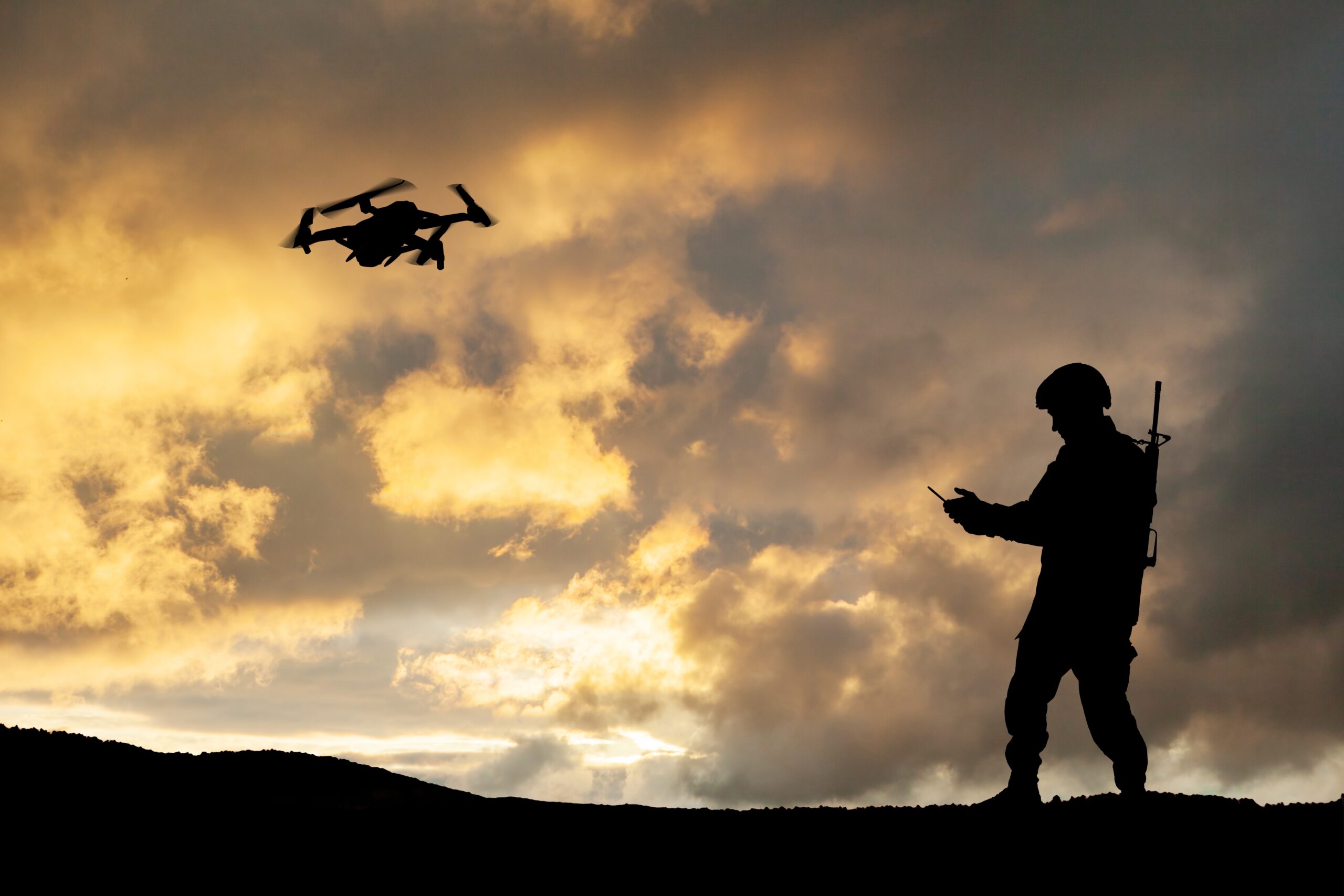The Defense Innovation Unit (DIU) exists to ensure that the U.S. Department of Defense (DoD) can confidently adopt commercial technology at the speed and scale demanded by modern operations—including drones or uncrewed aircraft systems (UAS). The recent launch of the DIU Blue UAS Recognized Assessors intiative marks a pivotal step to accelerate the approval and deployment of secure, NDAA-compliant UAS through a robust, multi-stakeholder partnership (MSP) model. This article, based on a recent DIU webinar, explains the what and why of the Recognized Assessors initiative; tips on how your organization might succeed in becoming selected as part of the first cohort; and how UAS manufacturers might expect to engage in the program to bridge onto the Blue UAS list.
The Mission: Accelerating Safe, Secure Drone Integration
The DIU mission is to accelerate the adoption of commercial technology at the speed of need or relevance—in order to automate complex or to win, force the fight. The goal is to get commercial tech into the hands of the warfighter as quickly and expeditiously as possible.
The DoD originally conceived the Blue UAS program to provide a trusted pipeline for commercial off-the-shelf (COTS) UAS platforms to ensure they meet stringent compliance and cybersecurity standards before the DoD fields them. Since its inception, Blue UAS has served as a gatekeeper: vetting drones for FY20 National Defense Authorization Act (NDAA) (Sec. 848) compliance and cybersecurity and maintaining the Blue UAS Cleared List—a roster of platforms authorized for DoD purchase and use. The Recognized Assessors initiative will introduce more assessors for the Blue UAS Program.
Why Recognized Assessors…Now?
The urgency for Recognized Assessors arises from the pressing need to stay ahead technologically and meet the evolving needs of warfighters with a diverse array of operationally relevant UAS platforms. As both the UAS industry and operational requirements have grown more complex, the need for a more scalable, agile approval process has become increasingly evident.
“We’re recognizing that not only has the industry evolved considerably, but also the needs of warfighters have continued to evolve over that timeframe. That has led us to move towards an evolution of Blue UAS that’s focused primarily on two pillars: the core compliance mission, and a new focus on scaling,” said Orlando Zambrano, who leads DIU’s Commercial Engagement for Autonomy.
The Recognized Assessors initiative, seeks to expand the pool of organizations authorized to conduct compliance assessments by leveraging third-party expertise. Through it, DIU aims to dramatically increase the volume and speed at which drones can be evaluated and cleared for DoD use. In doing so, it also hopes to encourage additional competition and drive down assessment costs.

How the Program Works: A Multi-Stakeholder Partnership
DIU built the Recognized Assessors initiative on a new authority that enables it to form collaborative alliances—multi-stakeholder partnerships (MSPs)—with industry, nonprofits, academic institutions and federally affiliated organizations to support national security needs. Recognized assessors will be responsible for conducting rigorous, standardized assessments of UAS platforms and components.
“The intent is to develop a network of recognized assessors—third-party entities that can conduct the needed assessments to establish NDAA compliance of different platforms and components, and then ultimately route those assessments back to DIU and the government to make the determination and addition of platforms to the Blue UAS list,” Zambrano explained.
DIU designed this approach to create a greater “top of funnel” for assessments so more companies—especially smaller or early-stage developers—can access the DoD market without being bottlenecked by limited government assessment resources.
The Concept: Clear Roles and Responsibilities
According to Zambrano, the Recognized Assessor role demands “significant independence, integrity, and technical rigor.” DIU remains determined not to sacrifice security or compliance standards for the sake of speed.
Recognized assessors will be tasked essentially being the “eyes and ears,” and in some respects “hands,” of DIU. Companies seeking inclusion on the Blue UAS Cleared List will engage and contract directly with a Recognized Assessor to conduct the required compliance assessment.
The assessors will: make compliance assessments on all relevant components under existing law and policy; verify ownership interest stakes as required under law; determine eligibility for platforms to be added to the Blue UAS list; review supply chain provenance and identify country of origin for critical components, software, firmware, and hardware and provide standardized assessments and reporting to DIU for certification consideration.
Once the assessment is complete, the DIU will review the assessor’s report and make the final determination as to whether the platform satisfies all requirements for certification and listing.
The Assessment Process: Technical Rigor Meets Standardization
The assessment process itself is multifaceted. As Shane Goodwin, DIU’s Autonomy portfolio lead, detailed, it specifically involves:
- Company Analysis: Scrutinizing ownership and control structures to ensure compliance with U.S. laws and regulations.
- Supply Chain Analysis: Conducting hands-on teardowns of drone platforms to trace the origin of critical electronic components, going far beyond simple bill-of-materials reviews.
- Cybersecurity Assessment: Performing adversarial-style penetration testing and compliance checks against federal standards to uncover vulnerabilities and ensure robust protections for DoD information.
Each of these areas requires deep technical expertise. DIU is open to assessors specializing in one or more segments, encouraging teaming arrangements to deliver comprehensive solutions.
To ensure consistency and trust, DIU will provide a standardized assessment playbook and reporting criteria to all recognized assessors. “There will be a standardization, supported by DIU in concert with the government, relevant stakeholders across the services and led by DIU, to quite clearly establish what the standard of assessment looks like for all recognized assessments,” Zambrano noted.
This playbook will also be published for the wider UAS community, so original equipment manufacturers (OEMs) know exactly what to expect before they seek assessment. “We will be working with the recognized assessors to finalize the playbook and figure out what makes sense and how best to execute on it. There will be a continuous evolution of this as well,” Goodwin added.
A Strong Submission: The Anatomy of a Recognized Assessor Team
Organizations interested in becoming recognized assessors must submit either a 15-page presentation or a five-page white paper outlining their capabilities, team composition, technical qualifications and ability to scale. DIU encourages both private and governmental entities to apply, provided they can engage directly with industry and meet the program’s rigorous standards.
Technical Expertise and Experience
This requirement focuses on an applicant’s qualifications, team composition, and demonstrated experience. DIU expects submissions to reflect a comprehensive, multidisciplinary approach. At the core, a strong team will bring together hardware engineers, cybersecurity subject matter experts and regulatory specialists—each playing a pivotal role in the assessment process.
Regulatory expertise is critical. Teams must demonstrate up-to-date knowledge of the NDAA, relevant executive orders, and the Federal Acquisition Regulation (FAR) as well as Defense FAR supplements that pertain to drones. This ensures assessments are not only technically sound but also fully aligned with evolving legal and policy frameworks.
Technical proficiency in supply chain forensics is another cornerstone. Assessors must be able to trace and verify the provenance of hardware and software components to identify potential compliance issues that could arise from complex, global supply chains. This demands both hands-on reverse engineering skills—to physically disassemble and inspect platforms—and advanced business intelligence capabilities to map out ownership structures and determine the nationality of key company stakeholders.
Cybersecurity is a central pillar of the assessment. Teams should be adept at penetration testing, vulnerability scanning, static and dynamic code analysis, and exploit development. The ability to identify, profile, and score vulnerabilities is essential, as is a deep familiarity with the Department of Defense’s Risk Management Framework (RMF) and associated instructions, as well as the Defense Information Systems Agency’s Security Technical Implementation Guides (DISA STIGs).
Ultimately, the most competitive submissions will showcase a blend of technical acumen, regulatory savvy, and investigative rigor to ensure that each assessment is both thorough and defensible.
Organizational Independence
Maintaining the integrity of the assessment process is non-negotiable. DIU has made organizational independence a top priority. Recognized assessors must remain unequivocally free from conflicts of interest and able to conduct assessments impartially. This means that assessors must maintain organizational independence, avoiding relationships or financial interests that might bias their evaluation of drone platforms or components.
Cost Structure and Scalability
This one focuses on expected costs and ability to scale. As one of the central goals of the Recognized Assessors Program, DIU hopes to reduce the cost and complexity of compliance for UAS developers. Ideally, this will make it feasible for smaller companies to participate. “We recognize that for a relatively small company or a company that’s early in its life cycle, we do not want this process to become a fundamentally gating factor in terms of the resources that they need to expend to do it,” Zambrano emphasized.
Adherence to Governance and Reporting Standards
This last criteria focuses on government standards, reporting formats and audit oversight. Experience providing clear, detailed reports for government audiences is a crucial criterion for Recognized Assessors. Assessors must demonstrate a proven track record in producing comprehensive documentation that not only outlines technical findings but also delivers actionable recommendations tailored for government decision-makers. These reports should translate complex technical assessments—such as supply chain forensics, cybersecurity vulnerabilities, and regulatory compliance—into clear, structured narratives that align with federal standards and terminology.
Ultimately, the ability to communicate findings in a manner that is both technically rigorous and easily digestible for government audiences is essential for maintaining trust in the assessment process and supporting the broader mission of secure, scalable UAS adoption within the DoD.
A Dynamic, Evolving Ecosystem
DIU designed the Recognized Assessors initiative to be dynamic. It will start with an initial cohort of assessors, carefully selected to ensure quality and capacity, and will expand the pool as demand grows. “The intent is to continue to grow that pool of recognized assessors to meet rising demand for the capabilities of NDAA compliance assessments,” Orlando said.
Recurring reassessments will be required for all platforms on the Blue UAS Cleared List, to ensure ongoing compliance as threats and technologies evolve.

A Blueprint for Drone Security and Innovation
The Blue UAS Recognized Assessors effort represents a significant leap forward in the way the DoD approaches drone security and procurement. By harnessing the expertise of a diverse network of assessors, DIU seeks to unlock the full potential of commercial UAS innovation while maintaining the highest standards of security and compliance.
Zambrano concluded, “This is a significant departure from the current process, but one that we ultimately think drives benefit, not only to the warfighter, but also to the broader UAS ecosystem. We look forward to collaborating to build this effort together.”
For drone manufacturers, cybersecurity experts, and compliance professionals, the Recognized Assessors Program is more than an opportunity—it’s an invitation to help shape the future of secure, scalable drone adoption in the United States.
For more information or to apply, visit the DIU Blue UAS Recognized Assessors Program page. The deadline for submissions is June 16th, 11:59 p.m. Eastern.

